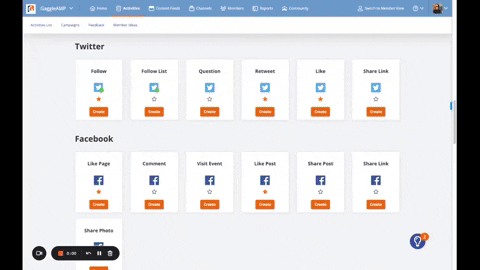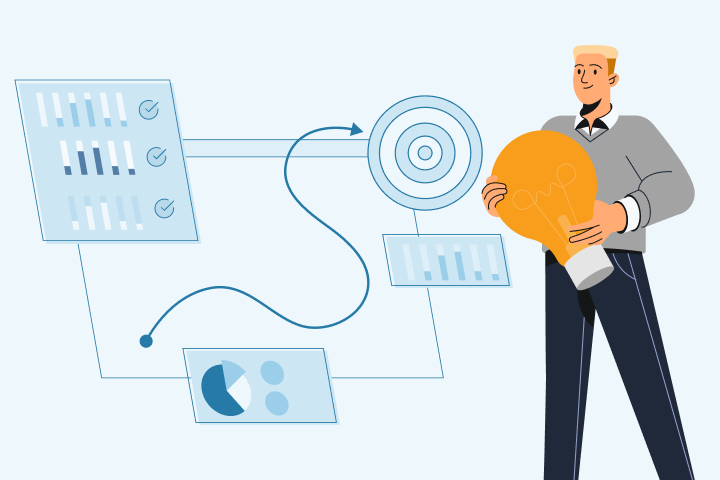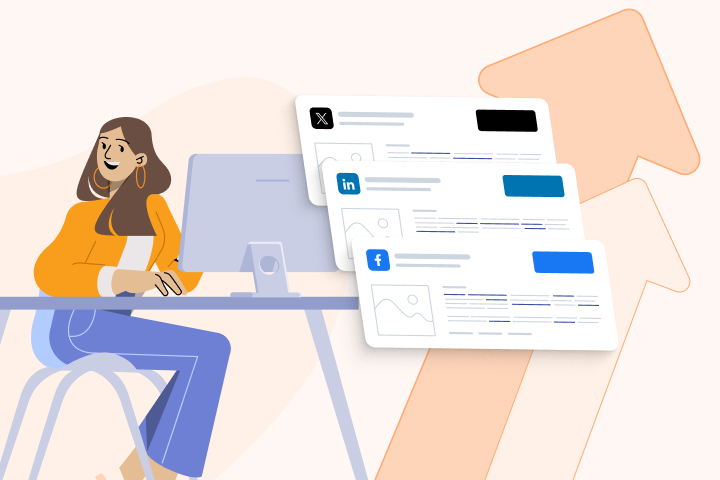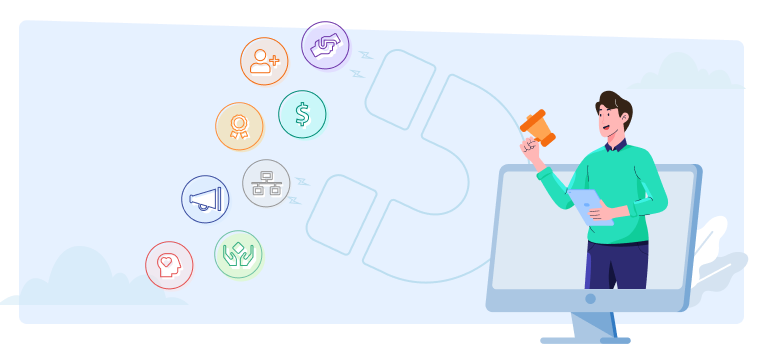The Best Brand Awareness Tools to Help You Get Seen and Trusted
With dozens of tools available to build brand awareness, it’s easy to find yourself faced with choice overload. Too many options can be overwhelming!
By identifying the most effective brand awareness strategies and matching a tool best suited to automate each strategy, we’re simplifying the process for you! Bonus: we also explain how you can effectively use each tool to aid your brand awareness strategy, too.
Now you can simply identify the strategy you want to execute and use the tool we’ve already researched. Ready to check it out? Let’s jump into it.
1. GaggleAMP – Employee Advocacy Tool
If every employee in your company actively discussed the product or service with their connections, you could easily multiply brand awareness thanks to the network effect.
While some employees naturally discuss their work and the company's value with their network, an employee advocacy strategy is an organized marketing strategy designed to increase brand awareness by assigning specific engagement activities to employees.
An engagement activity might be liking or commenting on one of the brand's social media posts, or requesting employees to create their own social media post promoting a key company initiative, like a new product launch.
Here's a great example of employee advocacy where the employee engages with branded content:
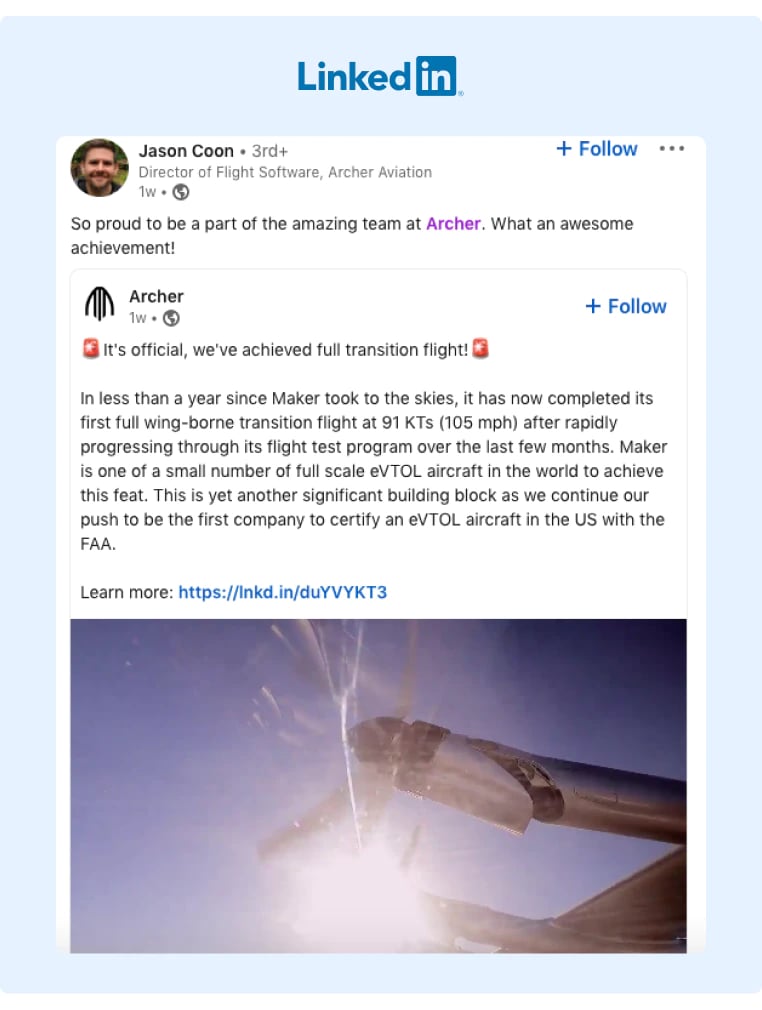
Here's another example of employee advocacy in action, though in this case, the employee created their own social post promoting company initiatives:
Inspiring even a small percentage of your workforce to engage with company content can significantly increase total brand awareness. However, it can be challenging to get all of your employees to engage consistently. While your first few requests may be well received, you'll likely notice that engagement drops off over time. Engagement decline usually occurs because:
-
It's time-consuming for employees to constantly log into social media and engage with branded content several times per week.
-
Employees don't know what kind of content to engage with or how they should engage.
-
With no solid metrics to track, they can't see the ROI of their efforts, and managers can't reward them.
So, to solve these problems, we built GaggleAMP. It improves employee engagement by allowing managers to send personalized engagement requests at scale and simplifies the employee engagement process.
Here's how it works:
Step 1: Select One of GaggleAMP's Many Engagement Activities
Engagement activities are sorted by platform (e.g., LinkedIn, Facebook, Twitter, etc.) and specify the action employees should take (e.g., like, comment, share, etc.).
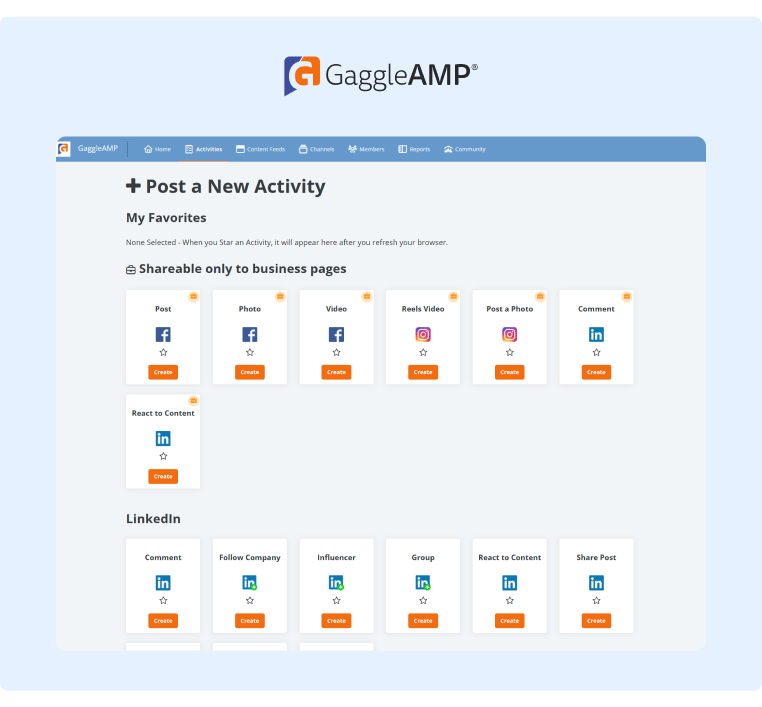
Step 2: Add Details to the Engagement Activity
Add a specific post link, pre-written text, hashtags to include, and any other special notes. You can also add a deadline.
Step 3: Assign the Activity to Specific Employees or a Group of Employees
For example, you can assign it to the marketing team, executives, or other groups of people. To assign activities to specific people, scroll through the list of active employees and check the box next to their name.
Step 4: Employees Receive a Notification That They Have an Engagement Activity
They can log into their personalized Gaggle to complete it. The main benefit of the personalized Gaggle is that employees don't have to think about which post to engage with as it's already specified for them.
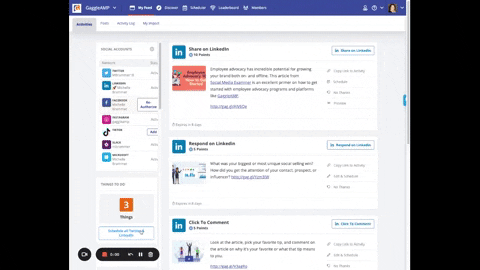
Step 5: Employees Then Schedule the Post To Publish at a Future Date
It makes it super easy for employees to schedule or complete all of their engagement activities in one sitting. This strategy significantly reduces employees' efforts to participate in the employee advocacy program, which increases engagement rates.
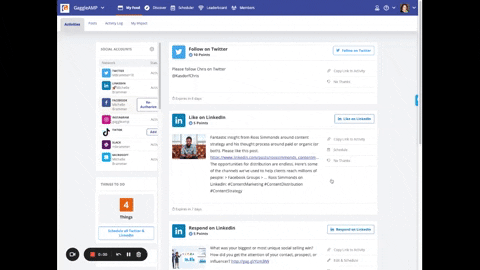
A key reason why GaggleAMP is so effective at improving employee engagement rates is that it removes much of the friction for employees to engage.
For example, employees no longer have to log into their social media accounts several times per week, figure out which post to engage with, and then hope that it's the content you want them to promote.
In addition, GaggleAMP offers detailed engagement tracking through its leaderboard, which ranks employees by engagement. This inspires friendly competition, and it allows you to reward employees for their engagement efforts. This makes employees feel more appreciated, which inspires them to continue engaging.
GaggleAMP also offers an analytics dashboard that makes it easier to measure brand awareness with metrics like total reach, clicks, engagement, and even estimated earned media value.
2. Buffer – Social Media Management Tool
Creating an effective social media marketing strategy that drives brand awareness often boils down to consistently publishing high-quality content. So, if your social media strategy isn't as effective as you'd like it to be, it's probably because the quality or quantity of content isn't sufficient. Fortunately, a social media management tool like Buffer can help solve these problems.
Here's how you can use Buffer to improve brand awareness by increasing both content quantity and quality.
First, Buffer's main feature is its content scheduling tool. Most social media managers start the month or quarter with an ambitious content plan, but it's easy for other responsibilities to crop up and derail the publishing schedule. By scheduling content in advance, you can ensure that the content publishing frequency remains consistent.
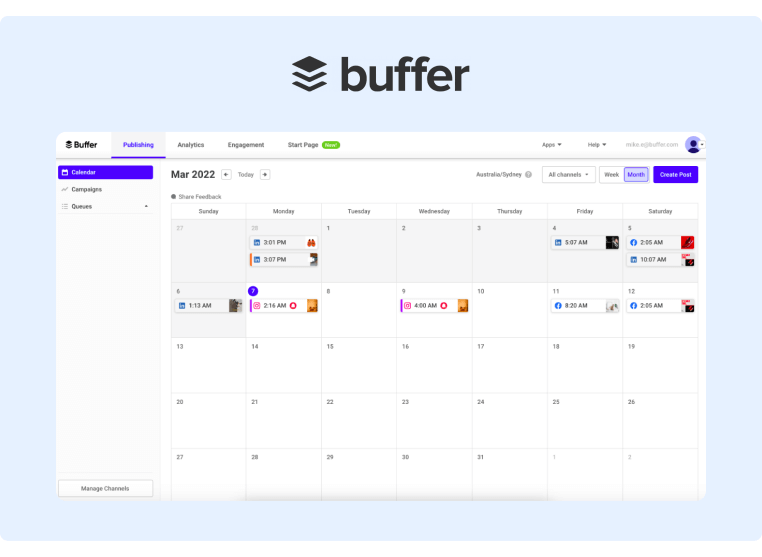
The scheduling feature supports most social media platforms including LinkedIn, Instagram, Twitter, Pinterest, TikTok, and Facebook, and you can schedule your post to multiple platforms at once.
Buffer also allows social media managers to respond to comments and monitor engagement across all social media channels from directly inside the dashboard.
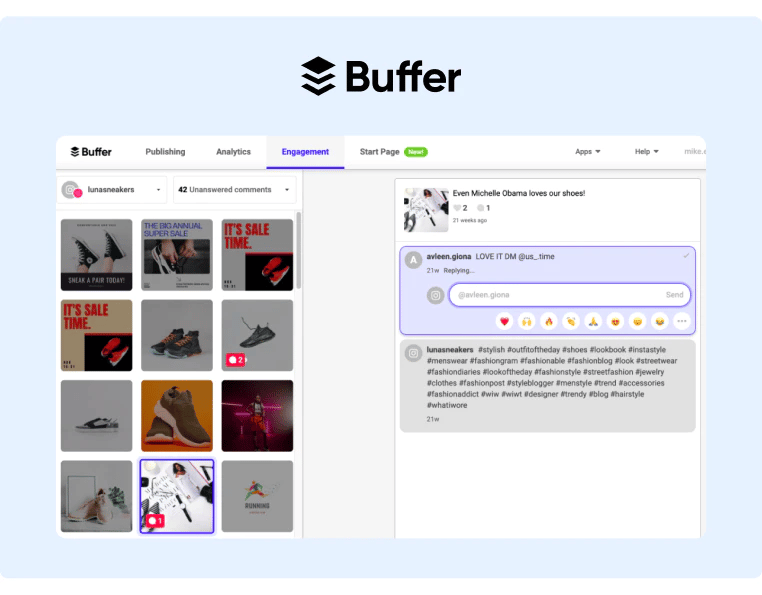
3. Awario – Social Listening Tool
A great strategy to achieve more, high-quality brand awareness is to find conversations that are already happening in your industry and simply join them.
Additionally, if someone is already discussing your brand online, you can jump into the conversation to add additional context to the discussion.
The tricky part is finding these critical conversations.
Fortunately, social listening tools like Awario solve this problem.
It allows you to track relevant keywords and brand names across different social media platforms and then sends custom reports and notifications when those keywords are mentioned.
For example, if you’re a B2B company like Monday.com, you might track competitor keywords like “Asana” or “project management tools.”
Day 2 & 3 of #30daysofSMManagement
— Sysh (🦄,🦄) (@Ndunge) December 4, 2022
What tools do you use for your SMM project management?
I like Trello and Asana. They're simple to use and low-budget.
Here’s another example of how social listening could be a powerful tool for Loom alternatives:
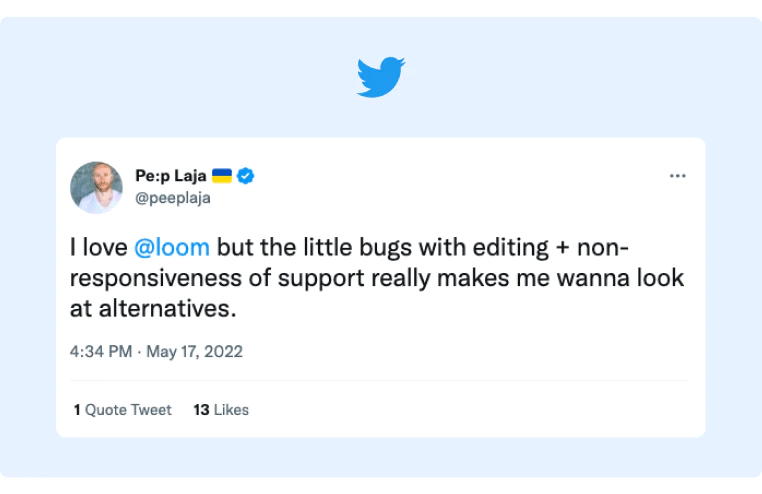
One of the alternatives did jump into the conversation and took advantage of the opportunity:
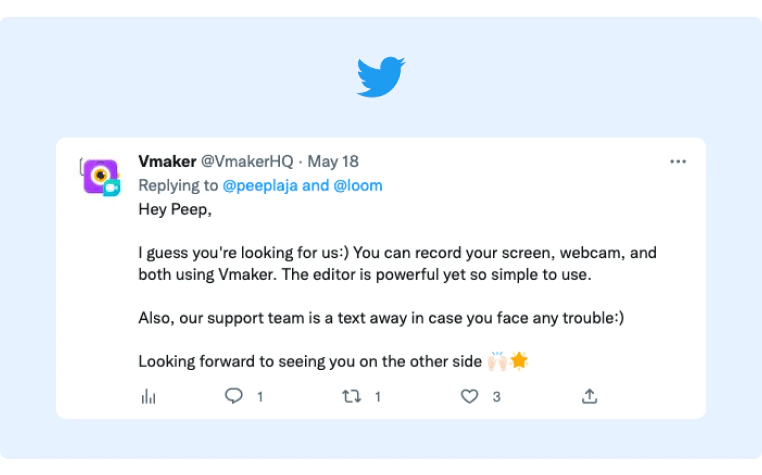
Awario also allows you to sort mentions by sentiment analysis so that you can handle negative brand mentions first and better shape the brand perception before new audiences receive a poor first impression.
It also allows you to sort by posts that have the most reach so that you can monitor conversations that are driving the most brand awareness.
4. Upfluence – Influencer Marketing Tool
One of the easiest ways to generate valuable brand awareness is to partner with an influencer who already has a loyal following with your target customers.
However, it can be tricky to find the right influencers, vet them to ensure they have a loyal following relevant to your business, and handle the campaign's logistics.
To solve these problems, consider using a tool like Upfluence.
It offers a database of vetted influencers and provides statistics like follower count, engagement rates, and even estimated cost per engagement. Upfluence also allows you to uncover influencers who are already fans of your products thanks to native integrations with e-commerce platforms and its social listening tools.
Once you've found some influencers that are a good fit for your brand, you can do bulk outreach directly inside the Upfluence platform. You can track which influencers have accepted your collaboration invitation and track their offer versus your budget.
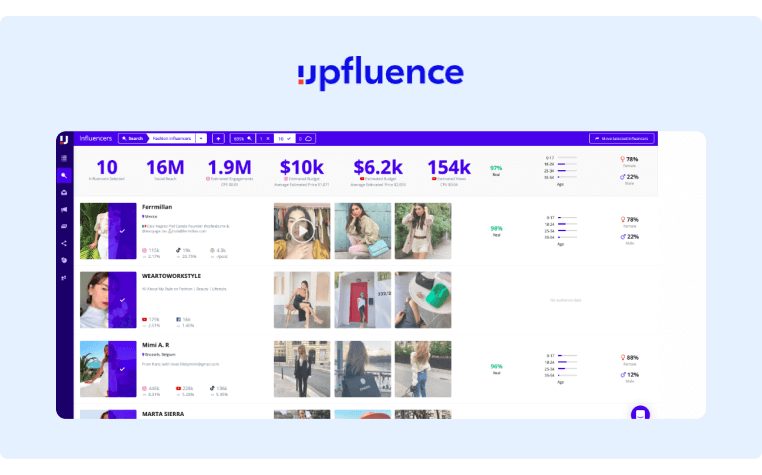
Alternatively, if you already have a list of influencers you're using, you can upload a CSV file to the platform.
The next step is to create your influencer marketing campaign.
Inside your dashboard, you can upload campaign briefs highlighting your objectives and goals. Then, influencers and team members can communicate directly inside the platform and upload campaign drafts.
After launching the campaign, Upfluence also tracks each influencer's campaign performance with metrics like total views, clicks, and CTR. This makes it easy to see which influencers are top performers so that you can hire them for future campaigns. It also offers a campaign-level analytics dashboard that shows real-time statistics like estimated earned media value, total engagements, and more.
Finally, Upfluence also calculates payments for you as it natively tracks engagement data, which eliminates price discrepancies between you and the influencer. To make payments simple, you only pay a single invoice through the Upfluence platform, and then it handles all currency transactions and payments for you.
5. Ahrefs – SEO and Content Marketing Tool
Organic search can be an incredibly powerful brand awareness strategy, though the ROI you’ll receive depends almost entirely on how well you rank for relevant keywords that potential customers are searching for.
So, to help you uncover the best keywords to rank for and estimate the difficulty of those keywords (the likelihood that you’ll be able to rank for them), you can use a tool like Ahrefs.
Ahrefs is a complete SEO tool, and we’ll discuss a few of its features that you can use to aid your branding strategy.
First, the keyword explorer enables you to search any keyword and immediately pull up a report with the ranking difficulty estimation, monthly search volume, approximate CPC (which is excellent for gauging the value of the keyword), and more.
It also offers a list of related keywords that you can browse to uncover additional keywords that are more relevant or have a better combination of high volume and low difficulty.
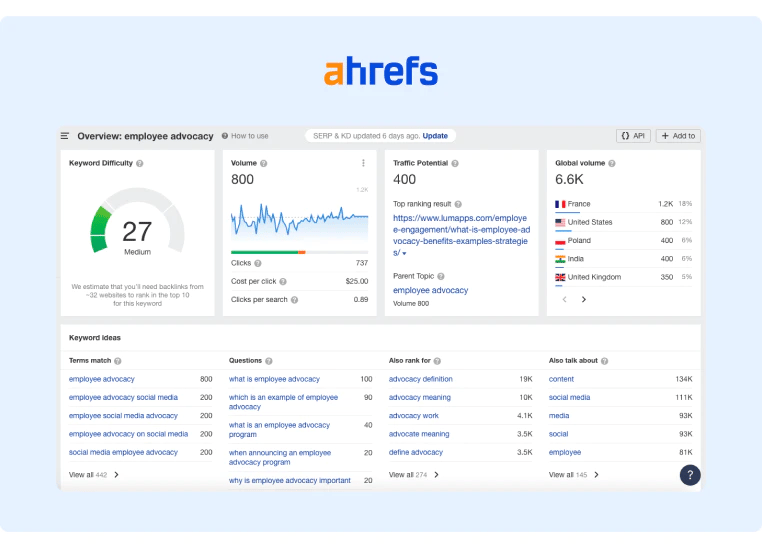
You can also use Ahrefs to inform your brand awareness strategy by typing in your competitor’s URL and then searching their top performing pages (pages driving the most website traffic). As you scroll through the top performing pages, take note of any topics that are also relevant to your brand and write a competing blog post.
A pro tip is selecting a competitor URL with lower domain authority than your website because it increases the likelihood that your competing blog post can outrank their blog post.
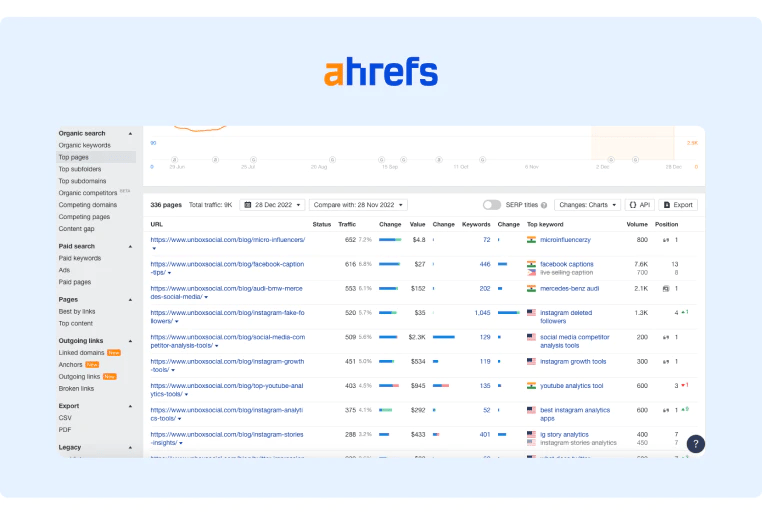
Link building is another important tactic that can help you increase the overall authority of your website, which will help increase your rankings in the Google search results and ultimately increase brand awareness.
There are a few different link building tools you can use inside Ahrefs.
First, you can type in a competitor’s URL and click the “Best by Links” report. This shows which pages have earned the most links, and you can use that information to write a competing post to hopefully earn similarly strong links.
If you want to take a more proactive approach to link building, you can use the "Backlinks" report to see which websites are linking to your competitors and then reach out to do a similar collaboration.
6. ConvertKit – Email Marketing Tool
Email is one of the best brand awareness strategies because it's the only channel you can fully own. However, building an effective email marketing strategy involves more than simply writing and sending emails.
First, you must collect emails, meaning you probably need a gated lead magnet. From there, you'll likely segment your audience by pain point and knowledge level (beginner, advanced, etc.). In addition, you may choose to send follow-up emails to recipients who didn't convert during a launch.
To help you automate these more advanced capabilities, you can use a tool like ConvertKit.
ConvertKit offers plenty of different tools to create a highly effective email marketing strategy, including:
-
Simple landing page builder.
-
Pop-up form builder.
-
Advanced segmentation and automated sequences.
-
Automation rules depending on recipient actions.
-
Customizable email templates.
So, here's how you can use ConvertKit to kickstart your email marketing strategy.
First, build a pop-up (with a lead magnet offer) for your highest traffic-generating pages. You can then use one of ConvertKit's automated email sequence templates to send those prospects through a nurture sequence relevant to the lead magnet topic to lead them to the conversion.
To create a nurture sequence, you can use one of ConvertKit's sequence templates.
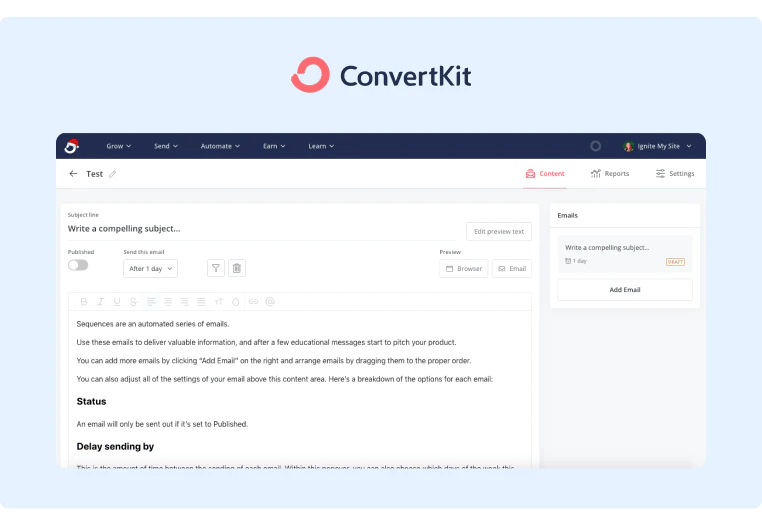
Once the lead completes the sequence, they'll be funneled into your main email list and receive your standard newsletters.
You can also add rules for different sequences if you want to get more advanced. For example, if someone signs up with either the "photography for beginners" or "photography tips" form, you can assign them the tag "interested in photography." From there, you can automatically funnel anyone tagged as "interested in photography" to a nurture sequence for a beginner photography course.
7. Referral Factory – Referral Marketing Tool
Not all brand awareness is equally valuable.
While an ad for your brand on TV is helpful for improving familiarity with your brand, a recommendation from an existing customer to their network is significantly more powerful.
Fortunately, you can use a tool like Referral Factory to incentivize your existing customers to promote your brand to their friends.
Referral Factory allows you to give existing customers a referral link that they can share across social media or email. It then tracks all of the sales generated by these referrals and allows you to see who your top performing customers are so that you can reward them accordingly.
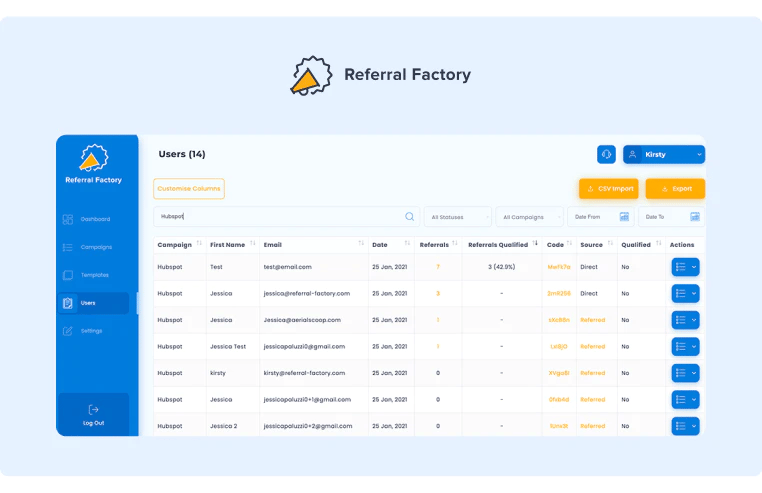
Referral Factory offers a selection of pre-made referral program templates for over 100 different businesses, though you can create a branded experience from start to finish with its easy drag-and-drop editor and adjust the colors accordingly.
You can also integrate Referral Factory with HubSpot and Salesforce so that your referral data is seamlessly integrated with the rest of your customer data.
Referral Factory is well equipped to support international businesses as it supports 21 languages.
Selecting the Best Brand Awareness Tool for Your Needs
There are plenty of different brand awareness tools you can use to boost your marketing efforts, though we’re particularly proud of GaggleAMP as it allows companies to multiply brand awareness at minimal additional cost to the company.
It’s also a great way to keep employees engaged and up-to-date with company initiatives.
To see for yourself how GaggleAMP can help improve brand recognition and keep your brand top-of-mind with existing customers, schedule a demo or jump into the platform today!

